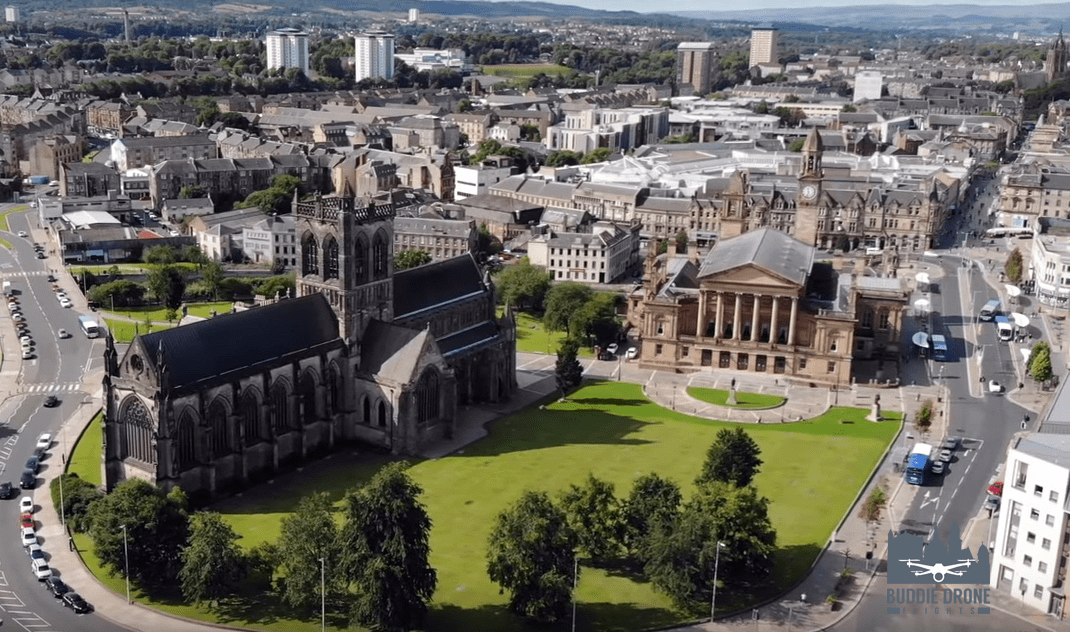Our Partners

Welcome to our partnerships page, where we celebrate the collaborative spirit of Paisley. We are proud to work alongside Paisley.org.uk, Glasgow Drone, and The Town of Paisley to promote the rich history and culture of this vibrant community.
One of our Partner websites, helps look after all of the Renfrewshire Facebook Pages and also the main site of Paisley.
Paisley On The Web
Paisley is the largest town in the historic county of Renfrewshire and is one of the largest town’s in Scotland. Situated to the West of the City of Glasgow, it serves as the administrative centre for the Renfrewshire council area. The town is on the northern edge of the Gleniffer Braes, straddling the banks of the White Cart Water, a tributary of the River Clyde.
Paisley.org.uk is a valuable resource for those seeking information on all things Paisley. With a focus on local news and events, this site serves as a central hub for residents and visitors alike. Our partnership with Paisley.org.uk allows us to share important updates and engage with the community in new and exciting ways.
Paisley at a Glance
Paisley is very fortunate to have had a rich and interesting history in our town, indeed the surrounding area has been at the heart of Scottish History for hundreds of years.
Paisley is a large town situated 7 miles (11 km) W of Glasgow, and 53 miles (85 km) W of Edinburgh and is the largest town in Scotland. The town grew up around Oakshaw, on the west side of the White Cart river, where a Roman fort may have existed.
Its growth in the early 19th century was primarily through textiles (printing, bleaching, cotton thread) and the name ‘Paisley’ was given to the Kashmiri pattern of curving shapes found on silk and cotton fabric.

Notable buildings include the Paisley Town Hall (1879-82), Paisley Museum and Art Gallery, the Coats Observatory (1883), the John Neilson Institution (1849-52), Stanely Castle (15th century, in the Stanely Reservoir to the south of the town), the Sma’ Shot Cottages and St Mirin’s Roman Catholic Cathedral. If you have anything for the Paisley history section, please use our contact page to send it in.
The Town of Paisley
The growing village on the river Cart was first recorded as Passelet, Passeleth, or Passelay in early records. By the sixteenth century, it was referred to as Paslay or Pasley, which eventually evolved into the Paisley we know today.
The origin of the name remains a mystery, with two popular theories being “moist pasture-land,” which accurately describes the surrounding countryside, and “flat stones,” possibly referring to the rock ledge at the Hammills.
Paisley has undergone significant transformation from a predominantly farming community to a weaving town serving Glasgow and Edinburgh. While farming remains an integral part of the area, it is crucial to preserve the rich heritage left by previous generations.
The sections accessible through the buttons on the right offer a glimpse into life in Paisley in bygone years. The Photo History allows a comparison between the town’s past and present, while the Rich History provides insights into the era before cars were invented. My Toon shares recent town history through the experiences of its residents.
If you are interested in learning more about Paisley’s history, please check back as we continue to update our history sections. Join us on our Facebook Group to engage in discussions on Paisley’s past.





